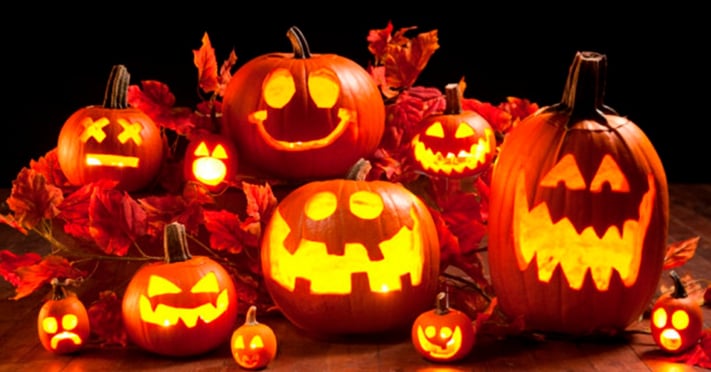By Maria Eugenia Noguera | Personal Tutor - Reconquista Center

Halloween is an annual celebration, but what do we celebrate in Halloween?
The word halloween has Catholic origins, it came from the modified contraction of All Hallows Eve. November 1st is the Catholic day devoted to observance in honor of saints and it is called "All Hollows Day" (or "All Saints Day"). But in Celtic Ireland, during the 5century BC, summer officially ended on October 31. This festivity was called Samhain (sow-en), the Celtic New year.
Halloween es una celebración annual, pero ¿qué es lo que celebramos en Halloween?
La palabra Halloween es de origen católico, viene de la contracción modificada de All Hallows Eve. El 1ro de noviembre es una fecha en que los católicos veneraban a los santos, que es llamada “All Hallows Day” (or “All Saints Day”). Pero en Irlanda, en los tiempos en que la habitaban los celtas durante el siglo 5 A.C, el verano empezaba oficialmente el 31 de octubre. Esta festividad se llamaba Samhain (sow-en), el Año nuevo celta.
It was believed that the spirits of those who had died the preciding year would come in search for bodies to live in the next year. Naturally, people did not want to be possessed. So on the night of October 31, villagers would extinguish the fires in their homes, to make them cold and undesirable. They would then dress up in all manner of ghoulish costumes and noisily paraded around the neighborhood, being as destructive as possible in order to frighten away spirits looking for bodies to possess.
Se creía que los espíritus de quienes se habían muerto el año anterior vendrían en busca de cuerpos para vivir en ellos el próximo año. Sin duda, los vivos no querían ser poseídos. Es por eso que el 31 de octubre, los habitantes de las villas apagaban la lumbre de sus casas para que queden frías y poco atractivas. Se vestían con disfraces macabros y marchaban haciendo ruido por todo el vecindario, destruyendo todo a su paso para asustar a los espíritus en busca de cuerpos para poseer.
With the passing of years, the practices have changed to become more ritualized. The belief in spirit posession declined, but the custom of dressing up like hobgoblins, ghosts and witches acquired a more ceremonial role.In the USA, the celebration of Halloween appeared with the Irish Immigrants in the 1840's.
Con el paso del tiempo estas prácticas se hicieron más ritualizadas. La creencia en los espíritus fue decayendo, pero la costumbre de disfrazarse de duendes, fantasmas y brujas tomó un papel más ceremonial. En los Estados Unidos, esta tradición apareció con la llegada de los inmigrantes irlandeses de origen celta en 1840.
The trick-or- teat custom originated during the 9th century ,”and it was called “souling”. It took place on November 2nd, which is called All Soul Days, during that day Christians would walk from village to village begging for “soul cakes”. The more soul cakes the beggars would receive, the more prayers they would promise to say on behalf of the dead relatives of the donors.
La costumbre de pedir golosinas se originó en el siglo 9, y se llamó “souling”. Ocurría los 2 de noviembre, que es considerado el “Día de todos las almas”, ese día los cristianos iban de villa en villa pidiendo “soul cakes”. Cuantas más tortas conseguían, más plegarias prometían hacer a los parientes por sus muertos.




